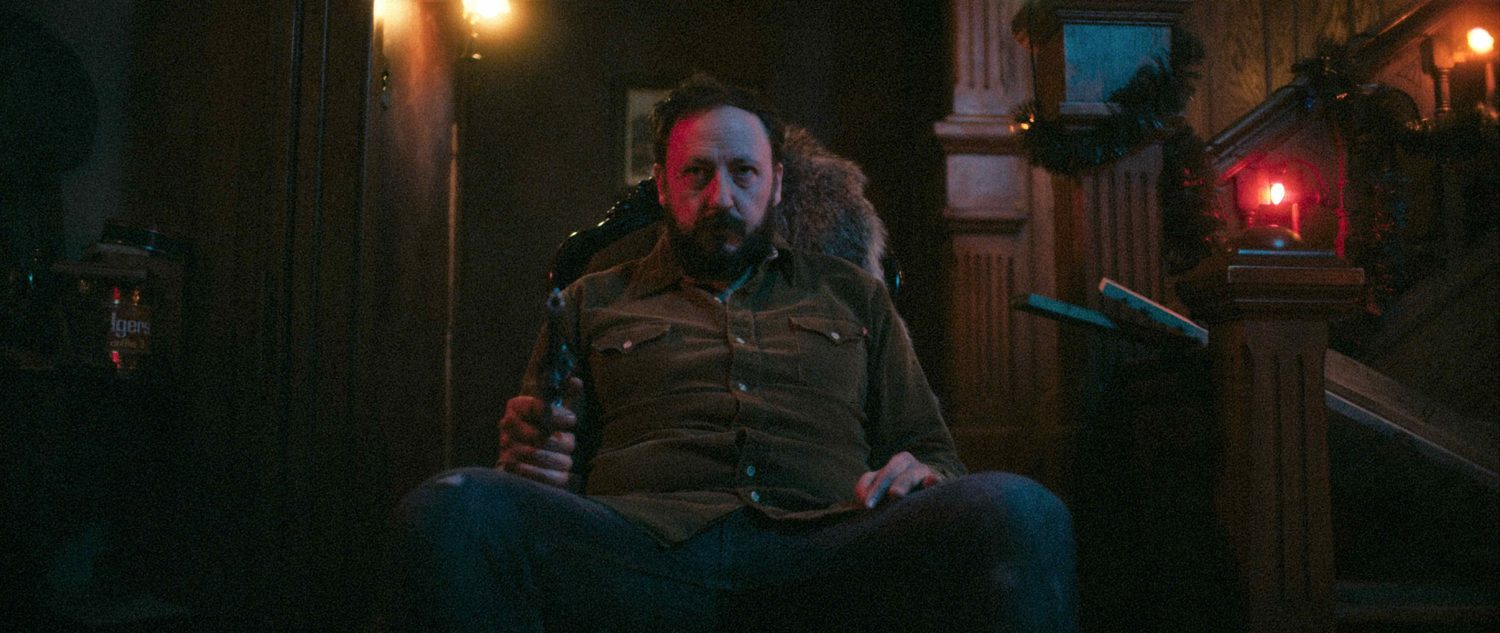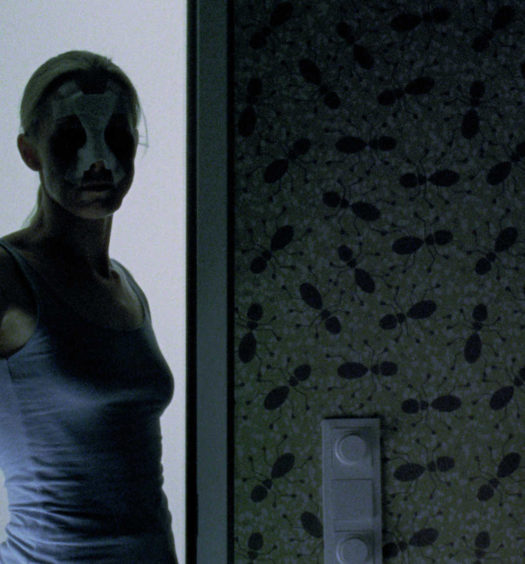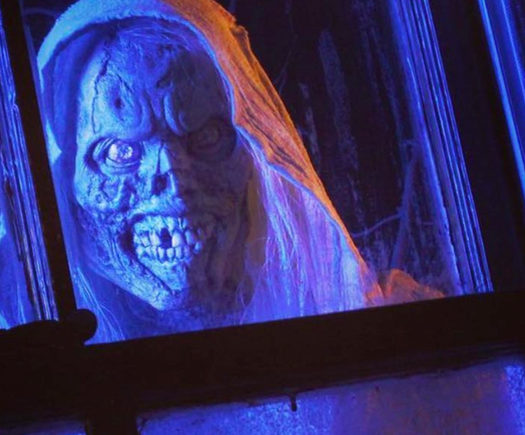Check out our review of I Trapped the Devil here.
Josh Lobo’s I Trapped the Devil is a tense, effective movie that takes inspiration from many of the greats of horror’s history. Viewers may find resonances with Satanic thrillers, supernatural haunting films, and as many have noted, The Twilight Zone. These influences are woven together into something new, with a creeping sense of dread that permeates the film.
Recently I had the opportunity to speak with Lobo on the eve of I Trapped the Devil’s release. Here’s what he had to say about the film’s influences and production. (Please note that our conversation has been edited to avoid major spoilers about the film. If you wish to go into I Trapped the Devil with no prior knowledge of general themes or influences, bookmark this page and come back after you’ve seen the movie.)
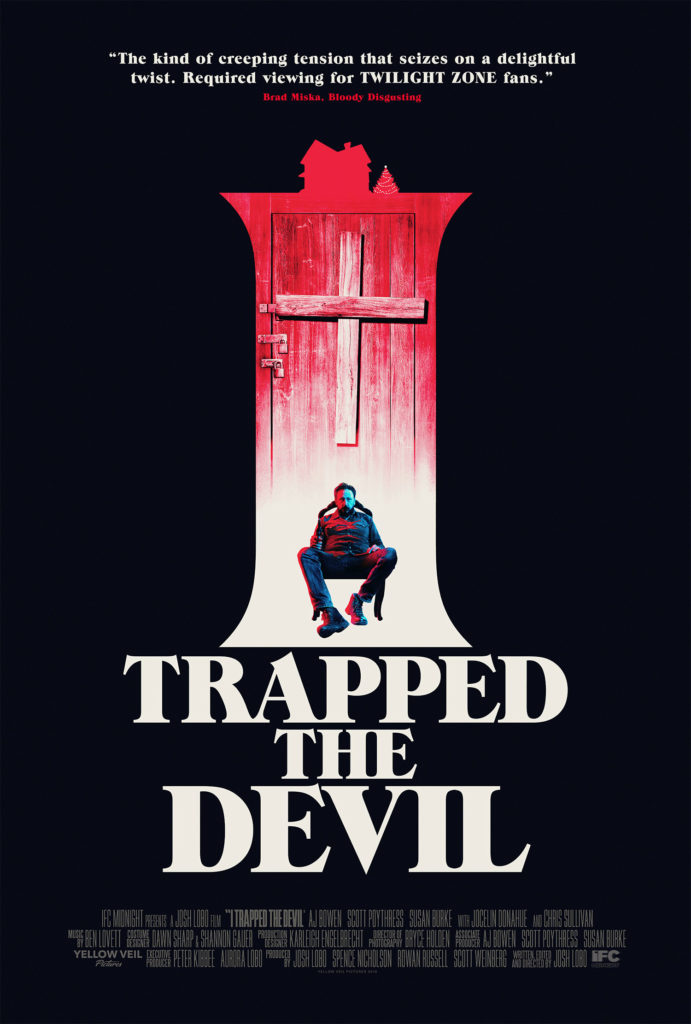
I knew going into I Trapped the Devil that this was your feature debut – and to be honest, this does not feel like the work of a first time director. The world of the film feels specific and fully realized. Can you tell me a bit about the development of the film and your preparation for production?
I’m a very hands-on creator, but so much of the work that I do benefits from the team that I’ve surrounded myself with. I have my hands in everything, but my team is strong enough to deliver what is needed. They really understand how to add an insane amount of detail to things to make it visually interesting. Same with my director of photography and with my sound designer. We worked on the sound design for eight months. Each and every sound was intricately crafted to elicit an emotion at exact moments. It’s all put together from tiny pieces.
I’ve seen the film twice now, and both times I was struck by just how effective the score and the sound design are. Can you tell me about your approach to sound in the film? Were there specific influences you discussed with composer Ben Lovett and sound designer Michael Archacki?
I didn’t ever listen to individual scores when preparing for I Trapped the Devil, but I’m very attuned to sound. I would watch a movie and think about the particular sounds used. There’s a ringing sound [in I Trapped the Devil] that’s a specific signifier of evil or psychosis. It’s a bell-like sound, and I pulled part of it from a game called BioShock. When you’re playing the game and you get near these shining objective markers, there’s a ringing noise that really stands out. In some ways it would be easy to compare this movie to The House of the Devil, because it’s a Satanic thriller and it features Jocelin [Donahue] and AJ [Bowen]. But that movie lived and died on its quietness. I wanted to do the exact opposite of what many slow-burn movies do. A lot of them are so quiet. I wanted an oppressive and richly textured soundtrack, with beginning-to-end sound. I wanted to build tension through an ever-evolving soundscape, and both Michael and Ben really got behind that idea. We listened to a lot of Trent Reznor and Nine Inch Nails, a lot of the more instrumental stuff. Ben had just come off of The Ritual and The Wind, which were almost more rustic scores. We wanted use more synth and drones, without going into a Carpenter score, which felt like it had been overdone.
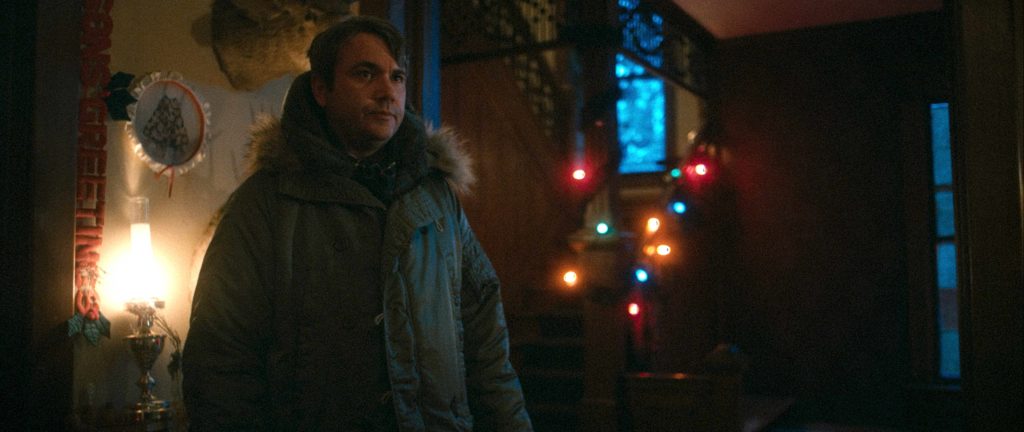
There’s nothing in the film that definitively identifies the time where all of this is taking place, though the clothes, cars, and technology glimpsed seem to set it somewhere in the 1970s or 1980s. Did you always intend for the film to take place in this timeframe, or did that change in the development process?
Originally I had written the script to operate in the 1990s. During development and preproduction, we had to make decisions quickly. We shot the film in nine days. Every piece of set dressing, every window covering, every piece of furniture, and every piece of clothing clothing – it was coming nonstop. After a while, we just rejected the 1990s timeframe and tried to place the story in a timeless setting. It could take place in 2015, and these are just antiquated home furnishings. It could take place in the 1970s. I wanted the audience to always feel uneasy. I think when you can’t quite pin when and where things are, you get rid of any familiarity with it. It just takes place when it takes place.
Did the setting create any unanticipated challenges?
We shot this in such a shotgun way that we had no time to second guess ourselves. It ended up being a blessing in disguise. It forced everyone, the entire crew, to make decisions on the fly. We might only have 30 minutes to get a specific shot – so we did everything we could to capture the best shot we could, the one that told the story in the best possible way. Then we had to move on. We were doing all night shoots in the middle of the winter. It was a miserable environment – always cold and dark. We were constantly trying to problem solve so we could shoot the film in the most effective way possible. We had shot the original opening to the film, and I didn’t love it. Having a couple of days of reshoots allowed us to go back and capture the tone we needed to make it fit with the rest of the film. We shot the film in January, and it was June when we started talking about reshoots, so we had to wait for the snow to return. It pumped the brakes a bit on the postproduction, but the film was much stronger for it.
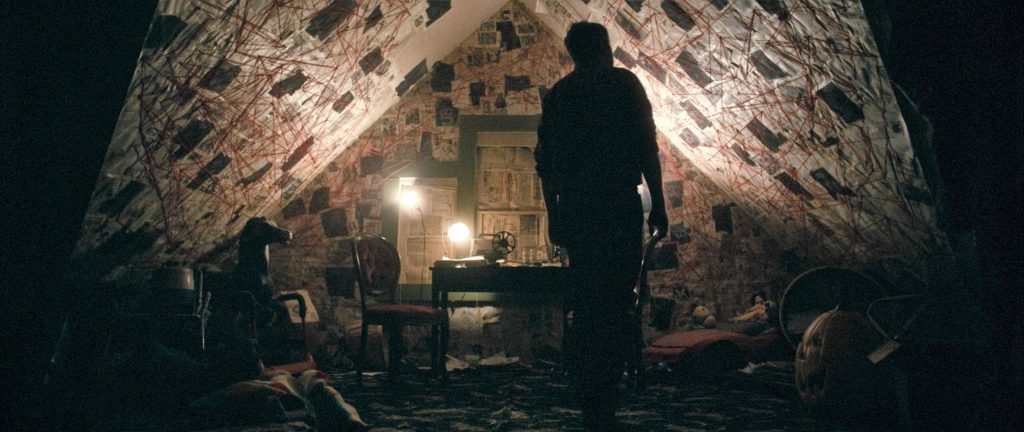
When watching the film, I couldn’t help but be reminded of some of the classic Satanic horror films of the 70s and 80s. A couple that came to mind were The Sentinel and Prince of Darkness. Were there similar films that inspired you, or that served as thematic references for your cast and crew?
I love The Twilight Zone, and the episode ‘The Howling Man’ in particular. But I think the idea of trapping the devil is something universal. I had originally watched ‘The Howling Man’ and felt like the idea could be reconfigured. It was from the 1950s, it had monks and monsters. I wanted to take the base premise and create something along the lines of a 1970s Satanic paranoid thriller, and bring my own influence to it.
While we were in postproduction, I had been on this binging spree of Matt Reeves’s Let Me In, which I think is an absolute masterpiece. It doesn’t get the credit it deserves. I think that movie tries so hard to distinguish itself from Let the Right One In, and it has such an emotional core to it. I really wanted to try to capture that cold tone. I love Roman Polanski’s films, especially The Ninth Gate. I have an interesting sense of humor, and I think things that are weird or offbeat are kind of hilarious. My actors understood that, and so there are a number of moments in the film where characters like Steve (played by Scott Poythress) will do something quirky. It’s weird, it’s intentionally funny. I love it. It lightens the mood a little bit. I don’t know if audiences will find it funny too, but it is intentionally supposed to be like that. Polanski’s films like The Ninth Gate and Rosemary’s Baby have this quirky sense of humor to them.
I love Prince of Darkness, and Poltergeist. I wanted to do something that was almost like a ghost in the machine, supernatural haunting – something that visually felt different from a lot of the supernatural films that are being made today. I wanted to do something that was a little more cerebral and not just dependent on jump scares. When you don’t have a lot of money, you don’t have access to a lot of the equipment and staging used to create these jump scares. We had to focus on mood and building atmosphere. I thought about the piece as something of a tone poem.
In the credits, I noticed that Glenn Chadbourne had contributed art for the film (I’m guessing some of the illustrations in Steve’s room). My first exposure to his work was in the Cemetery Dance releases of Stephen King’s The Secretary of Dreams books. How did Glenn get involved in the project?
That’s an interesting comparison – as I always thought the film felt more like a Stephen King novel. It’s macabre, and all of the characters are blue-collar people. I own some of Glenn Chadbourne’s art, like his Doctor Sleep cover, and it’s beautiful. I reached out to him to see if he would create a Stephen King-esque cover for my movie, and he made one. He and Candace Tripp both created art for posters.

In my mind, the film clearly answers the question of whether this is real or all in Steve’s head. Was this always your approach, or did some versions of the script leave it more ambiguous?
Without spoiling anything, when I started writing the script, I knew I wanted to take a definitive stance. I thought it was more interesting and more satisfying to give a definitive answer and then let the audience connect to the plight and how the characters relate to the events going on around them.
Thanks to Josh Lobo for taking the time to discuss his new film with us. I Trapped the Devil is now playing at select theaters and on VOD.
